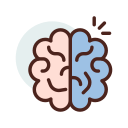
Skripsi
NETWORK PHARMACOLOGY DAN MOLECULAR DOCKING DALAM MEMPREDIKSI AGEN PENYEMBUH LUKA BAKAR DARI EKSTRAK DAUN GAMBIR (Uncaria gambir Roxb)
Penilaian
0,0
dari 5
Burn wound are tissue damage caused by contact with heat sources such as fire, hot water, electricity that cause infection, bleeding and affect body systems. The use of chemical synthetic drugs for burns can cause side effects. It is necessary to use natural ingredients that contain anti-inflammatory substances as an alternative in reducing side effects, such as gambir leaves. This study explored the main active ingredients and the underlying mechanism of Uncaria gambir in the treatment of burn wound by network pharmacology and molecular docking. Swiss target and GeneCards databases were used to obtain active ingredients of Uncaria gambir to predict related targets of Uncaria gambir and burn wound healing. Cytoscape and STRING databases were used to construct Ingredient-target-disease and PPI networks, respectively. Molecular docking was performed using the Autodock platform to predict the binding of the active components to key action targets. Network Pharmacology results revealed seven compounds and 20 target proteins with quercetin, nicotiflorin, EGC, kaempferol, catechin and rutin as potential compounds in burn wound healing. The most important target proteins in the burn wound healing process include AKT1, TNF and EGFR. The results of molecular docking of compounds and potential targets showed a strong interaction between nicotiflorin and EGFR, with a binding affinity -8.575 kcal/mol. The nicotiflorin compound in gambir leaf extract interacts with AKT1, TNF and EGFR receptors on the active side of the receptor with lower binding affinity values and inhibition constants compared to the silver sulfadiazine comparator compound
Availability
| Inventory Code | Barcode | Call Number | Location | Status |
|---|---|---|---|---|
| 2407001297 | T140390 | T1403902024 | Central Library (References) | Available but not for loan - Not for Loan |
Detail Information
- Series Title
-
-
- Call Number
-
T1403902024
- Publisher
- Indralaya : Prodi Ilmu Farmasi, Fakultas Matematika dan Ilmu Pengetahuan Alam., 2024
- Collation
-
xiii, 121 hlm.; ilus.; 29 cm
- Language
-
Indonesia
- ISBN/ISSN
-
-
- Classification
-
615.107
- Content Type
-
Text
- Media Type
-
unmediated
- Carrier Type
-
-
- Edition
-
-
- Subject(s)
- Specific Detail Info
-
-
- Statement of Responsibility
-
KA
Other version/related
No other version available
File Attachment
Comments
You must be logged in to post a comment
 Computer Science, Information & General Works
Computer Science, Information & General Works  Philosophy & Psychology
Philosophy & Psychology  Religion
Religion  Social Sciences
Social Sciences  Language
Language  Pure Science
Pure Science  Applied Sciences
Applied Sciences  Art & Recreation
Art & Recreation  Literature
Literature  History & Geography
History & Geography